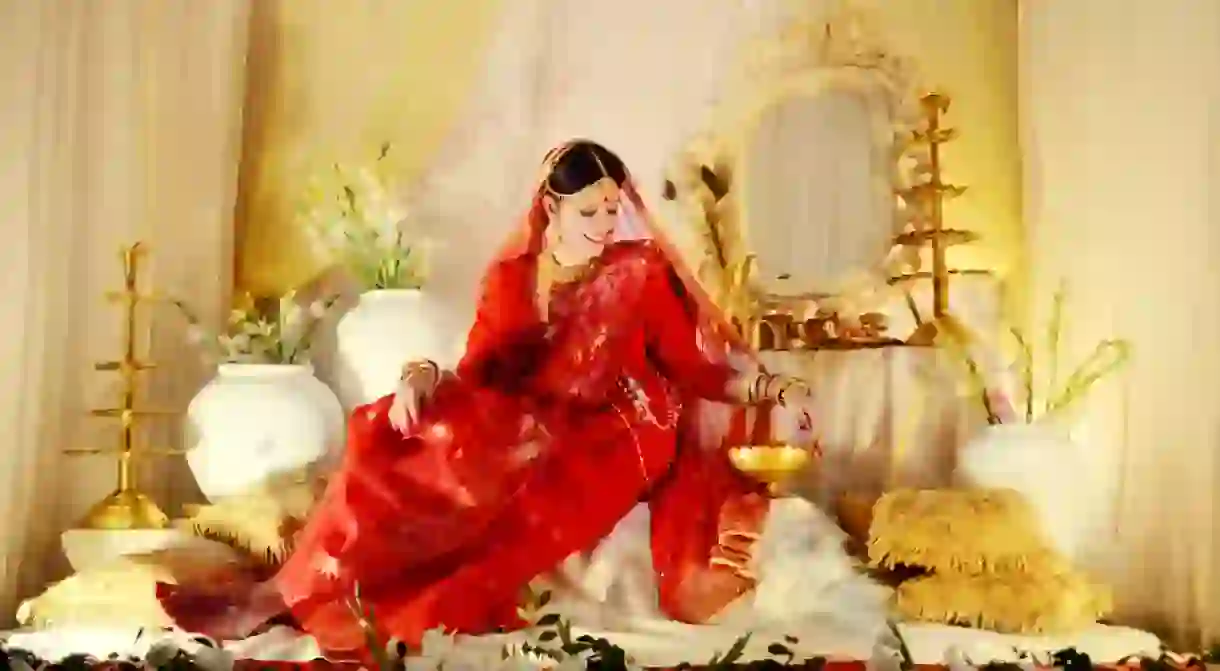A Brief History Of India’s Traditional Saree

At more than 5,000 years of existence, the Indian saree is considered to be among the oldest form of garment in the world still in existence. The Vedas – among the oldest literature composed by mankind – mentions it, and records from the Indus Valley Civilization (3300–1300 B.C.E.) also indicate its usage at the time. Yet it being ancient has in no way impacted its popularity. Still ubiquitous – on ramps at leading fashion shows, in bollywood, on streets of rural and urban India, on hip college students and their conservative grandmothers – the saree is as entrenched in our culture as it ever was.
The unstitched single piece of cloth evolved due to ancient Hindu belief that stitching cloth made it impure. And so the four-and-a-half to eight meters of cloth – draped around the lower body and then with a tactful pleating process folded across the upper body – came to be appropriate attire. The saree is considered to have been evolved from a three-piece-attire consisting of unstitched stretches of cloth draped as a lower garment, a chest band and a piece worn over ones shoulder or head. This predecessor of the saree is mentioned in ancient Sanksrit literature dating to the 6th century B.C.E. Even lehengas, ghagras and cholis are considered to have their roots in this attire.

With its ability to be warming in winter, and cooling in summer, its professional and aesthetically stylish appearance yet its utility (for example, it can be folded and tucked to be shorter), the saree developed to be the most suitable attire for South Asian women. This is precisely the reason it is donned by politicians and farm-workers alike.
While there exists a professional or classical style of draping a saree, there are more than 80 variations of it across the subcontinent. There’s the pleatless Bengali and Odia styles, the Kodagu style saree which is a back to front version of the classic style, the two-piece Malayali version, and so on. Variations also exist depending on the kind of fabric, as well as on methods of weaving that have been used. Hence there are the tie-dye Bandhani sarees, Chanderi cotton sarees and the numerous silk saree varieties including the Kanchipuram, Banarasi and Mysore sarees.













